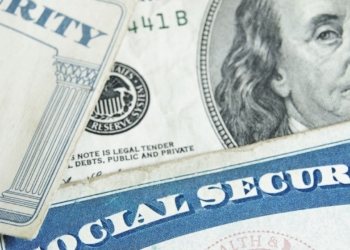An analysis by Oxford Economics indicates that multiple groups of taxpayers could receive larger tax refunds in 2026. This scenario is a direct consequence of the tax policy changes established in the One Big Beautiful Bill Act (OBBBA). The changes, which are retroactive, apply to the entire 2025 tax year.
Several key provisions of the Republican Party’s tax legislation, enacted in July, have retroactive effect. This means that a significant portion of taxpayers likely over-withheld taxes during the first half of the year. This situation will continue unless withholding adjustments are made.
How the New Tax Law Will Increase Your Refunds in 2026
The 940-page tax legislation incorporated policies such as “no tip tax,” “no overtime tax,” and the “senior citizen bonus.” These tax measures will be in effect from fiscal year 2025 through 2028. Additionally, the law increased the limits for the state and local income tax (SALT) deduction and established a new deduction for auto loan interest.
According to the report, the total sum of these tax changes could translate into larger refunds or reduced tax liabilities for certain groups. The total impact is estimated at up to $50 billion. The research identified that a large number of taxpayers have not changed their tax withholding.
Groups Who Will Receive Larger Refunds Next Year
Potentially affected groups include seniors who qualify for the new “senior bonus” deduction, with amounts of up to $6,000. Also impacted are tipped workers and those with overtime income subject to the new deductions. New vehicle buyers also benefit, as they can deduct interest on their loans.
In theory, taxpayers would have been able to adjust their withholdings downward after the law’s passage to access the benefits immediately. However, “there is no evidence that this is happening on a significant scale,” said Nancy Vanden Houten, principal economist at Oxford Economics.
Adjustments to withholding: the IRS position
The Internal Revenue Service (IRS) has not updated its publicly available withholding tables to incorporate the changes in the new tax law. Because employers rely on these tables to calculate withholdings, most payroll systems do not reflect the reductions mandated by the regulations. This situation creates a gap between the law and its practical application.
The IRS’s online withholding estimator displays a notice indicating that the information is outdated. In another section of its portal, the agency suggests taxpayers “check your withholding manually or consult a tax professional” if they fall into any of these categories: earn tips or overtime pay, have purchased a new car and paid interest, have paid more than $10,000 in state and local taxes, or are age 65 or older.
The IRS confirmed in an August 7 press release that it is developing “new guidelines and updated forms” for 2026. Individuals who wish to immediately modify their withholding can file a new Form W-4 at their workplace. Adjustments to tax withholding applied to distributions from pensions, IRAs, and other sources of income are also possible.
Why Manual Tax Withholding Adjustments Remain a Hurdle for Many
The process of making manual withholding adjustments while the IRS works to update its forms and tools can be overly complex for a large portion of the population. This operational complexity acts as a barrier to taxpayers optimizing their cash flow throughout the year.
As a direct result of this situation, a significant number of taxpayers are expected to receive larger refunds during the 2026 tax season. This outcome appears to be, in part, an expected outcome. The Trump administration and the lawmakers who sponsored the legislation have emphasized that the legislation will put money in Americans’ pockets.
“We’ve reduced their taxes to levels no one has ever seen. I mean, no tip tax, no Social Security tax, no overtime tax,” Trump said during a Cabinet meeting. “It’s been a great thing for a lot of people.” These statements emphasize the political objective of the measure.
Why a Big Refund Check Signals Poor Cash Flow Management
From a personal finance perspective, receiving a large tax refund isn’t necessarily the best scenario. A check from the IRS, while perceived as a bonus, indicates that the taxpayer withheld more money than strictly necessary during the year.
Financial professionals often advise against the practice of withholding extra money. Their recommendation is based on the principle that a large tax refund is essentially equivalent to having given the government an interest-free loan. Last tax season, the average refund was $2,939. It remains to be seen whether the average amount will increase next year.





